Top 11 Most Beautiful Historical Sites in Fiji
Fiji is a fascinating country to learn about because of its colorful history of island explorers, indigenous settlers, Tongan invasions, colonization, military ... read more...coups, and more. Many of Fiji's historic landmarks, as well as experiences to observe centuries-old traditions still being practiced, may be visited today. Visiting Fiji's historical landmarks will take you all around the island nation, but even just visiting a couple will give you a better understanding of how things used to be and how they impact Fiji today. Let’s check 11 most beautiful historical sites in Fiji below!
-
Known as one of most beautiful historical sites in Fiji is Levuka Historical Port Town. Historical Port of Levuka The town is situated among coconut and mango trees on Ovalau Island's seashore, against the forested slopes of the island's extinct volcano. The port was developed as a hub of commercial activity by American and European colonists from the 1820s onwards, and the town became Fiji's first colonial capital, which Tui (King) Cakobau quietly handed to the British in 1874. Beach Street is surrounded by a stone and concrete sea wall, from which other streets and alleys branch inland in a radial arrangement, following the land's contours. On one of the three streams that drain the slopes above the coastal plain are the sites of two old indigenous communities, Totoga (Vitoga) and Nassau. Along Beach Street, copra sheds, warehouses, bond stores, port facilities, and commercial structures came up, while around the indigenous population's communities, dwellings, religious, educational, and social institutions built up.
Single or two-story corrugated iron or weatherboard clad timber structures with hipped or gable roofs are typical. Companies continued to construct bases at Levuka after the capital was moved to Suva in 1882, reflecting all periods of colonial growth in the South Pacific. The former Totoga and Nassau village sites, the former Cakobau Parliament House site (now the European Memorial), the Morris Hedstrom bond store, the Baba indentured labor settlement, the Hennings residence, Captain Robbie's bungalow, Sacred Heart Cathedral, and Presbytery dating from the 1860s, the Royal Hotel founded in the late 1860s, Deed of Cession site, former Government (Nasova) House site, Port Authority, Post, and Customs buildings, as well their remnant tram tracks to the wharf, former Methodist Church and mission, Levuka Public School, Town Hall, Masonic Lodge, Ovalau Club, Bowling Club, workers cottages and the shell button factory site.
Location: Levuka, Fiji
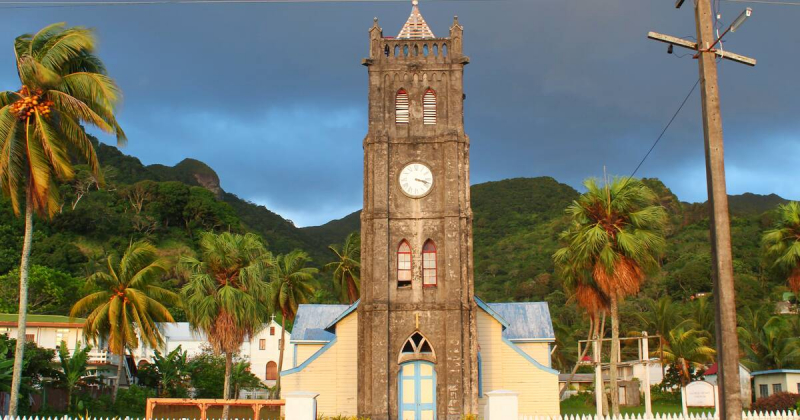
Photo: https://whc.unesco.org/ 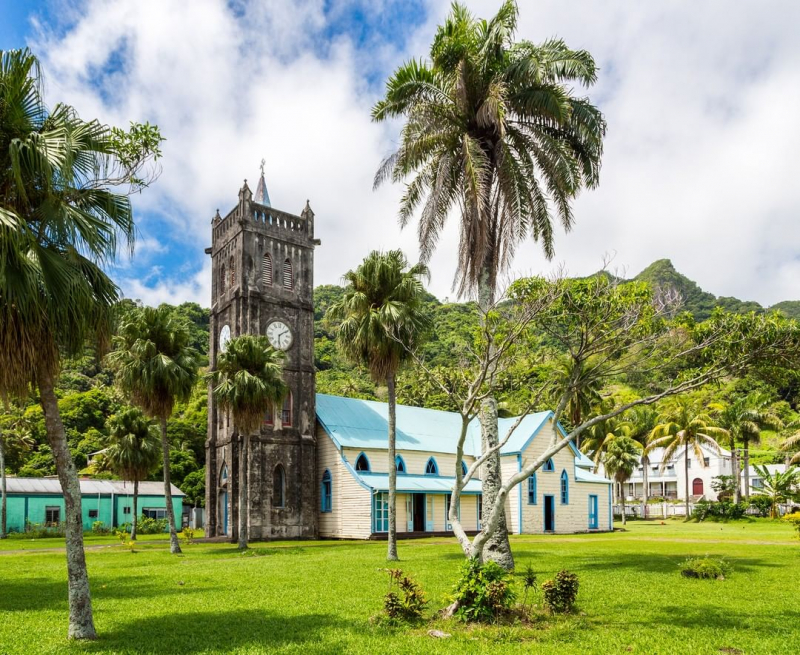
Photo: https://travelbloggerindonesia.com/ -
In terms of biological and landscape legacy, the Sovi Basin, Walmart, is Fiji's most important land ecosystem. Naitasiri Province is home to the 19600-acre Basin. The Sovi Basin offers a lot of unique natural characteristics. The Basin's remarkable bowl shape and encircling volcanic peaks create a landform that is unique to Fiji and the island Pacific. Its bottom is made out of strong granite rock that has progressively worn into low rolling hills drained by crystal clear rivers and streams over time. Undisturbed tropical lowland forest covers the entire landform. In a collaboration between Fiji Water and Conservation International, the property will be safeguarded. According to Fiji's Biodiversity Strategy and Action Plan, the rainforest, wilderness area, and high beautiful valley contribute to its national significance.
The Sovi Basin is Fiji's natural forest's largest, most diverse, and most scenically excellent area. It would be the "jewel in the crown" of Fiji's protected areas system if it were preserved, serving as the principal repository for the country's land-based biodiversity. The Sovi Basin's remarkable natural and cultural elements combine to create a compelling case for ecotourism development. The lynchpin of a new heritage focus for Fiji's tourism business would be the international promotion of the natural and cultural elements of the Sovi Basin.
Location: Naitasiri Province, Fiji
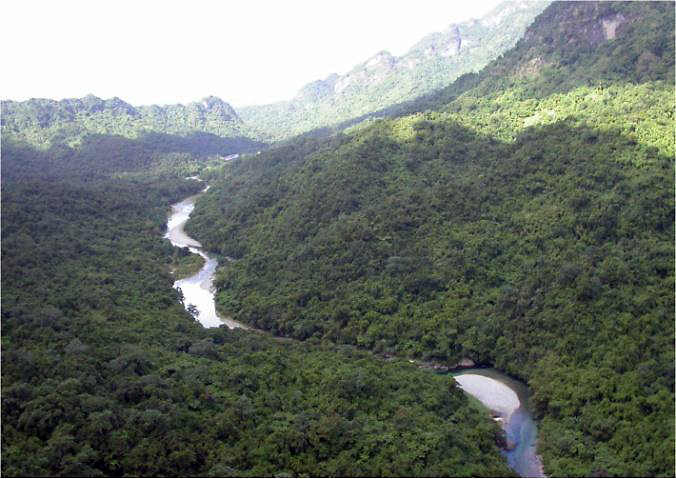
Photo: https://www.fijitimes.com.fj/ 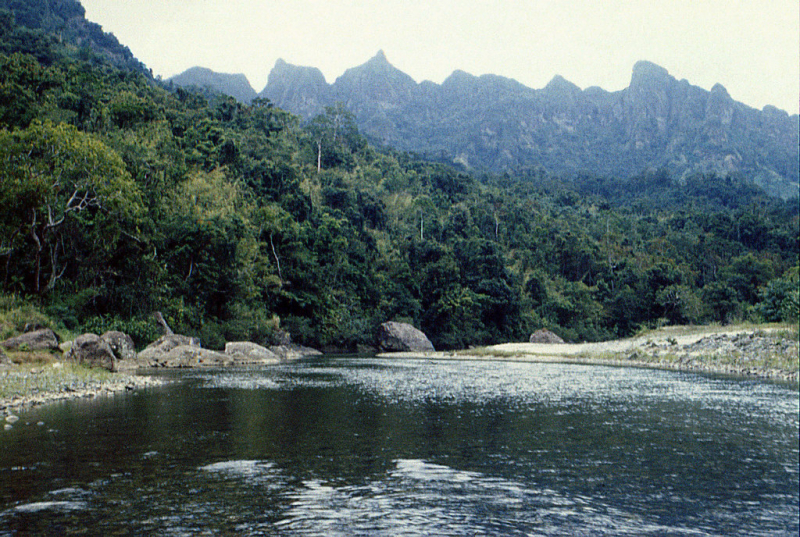
Photo: https://www.fijitimes.com.fj/ -
The Sigatoka Sand Dunes are located right west of the mouth of Fiji's second-largest river, the Sigatoka River. They are the result of coastal dune formation and river erosion in the coastal hinterland. The vast dune system, which spans 650 hectares, is made up of a series of parabolic dunes of varying ages and activity.
Approximately half of the territory, particularly in the east, is insecure. Native forests and introduced herbaceous ecosystems make up the majority of the vegetation. One of Fiji's earliest reported prehistoric sites is located in the Sigatoka Sand Dunes. As pottery shards, stone tools, human remains, and other archaeological relics are revealed by natural processes, evidence of the past can be seen throughout the dune system.
Archaeological digs in the area have uncovered pottery fragments dating back over 2,600 years, as well as human bones. Archaeologists believe the first occupants of Fiji were the Lapita people, a prehistoric culture assumed to have lived in the Pacific, based on excavations. One of the largest burial sites in the Pacific is also located in this area. In July 1989, the dunes were recognized as Fiji's first National Park, and the National Trust of Fiji took over management. The dunes are now a popular educational and recreational destination for both locals and visitors. The dunes are a major source of archaeological objects and information for local and international colleges and archaeological institutes, in addition to being a popular tourist site.
Location: Yadua, Fiji
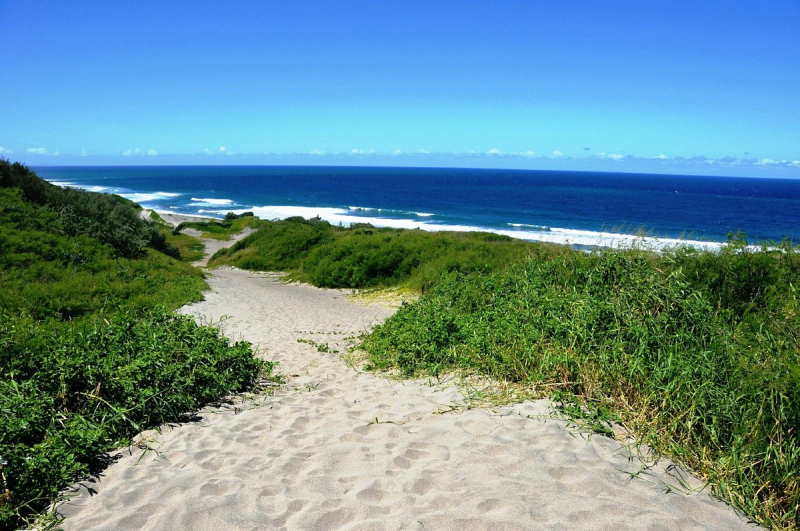
Photo: https://www.tripadvisor.com.vn/ 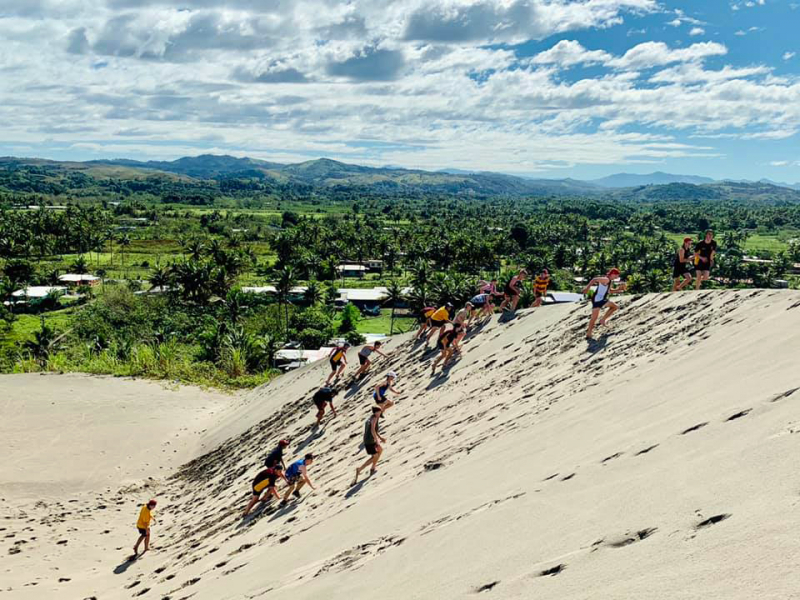
Photo: https://www.fijitimes.com/ -
Yadua Taba is a volcanic islet off the coast of Fiji, located between the northern island of Vanua Levu and the larger island of Yadua. On the island of Yaduataba, the Crested Iguana, Brachylophus vitiensis, is seen in huge numbers. The National Trust of Fiji won a management agreement for the uninhabited island and adjacent coral reefs, and established it as Fiji's first wildlife sanctuary in 1980 after the discovery of a crested iguana on the tiny island in 1979 sparked public attention. When the iguana population was discovered in 1979, the Fiji government stepped forward to safeguard the island. According to Fiji's Biodiversity Strategy and Action Plan, the sanctuary is of national significance.
The uninhabited island is a rainshadow island, with an annual rainfall of less than 180cm. Beech forest, invasive Casuarina scrub, abandoned copra plantations, coastal scrub, and grassland make up the vegetation. Migratory birds, tree skinks, and geckos are the only animals found here. The species is mostly arboreal, only coming down to the forest floor to oviposit. Both sexes are omnivorous, and males are territorial. Yadua Taba is also unique in that it features tropical dry forest flora, which is one of the world's most endangered (if not the most endangered) vegetation kinds!
Location: Vanua Levu Group, Fiji
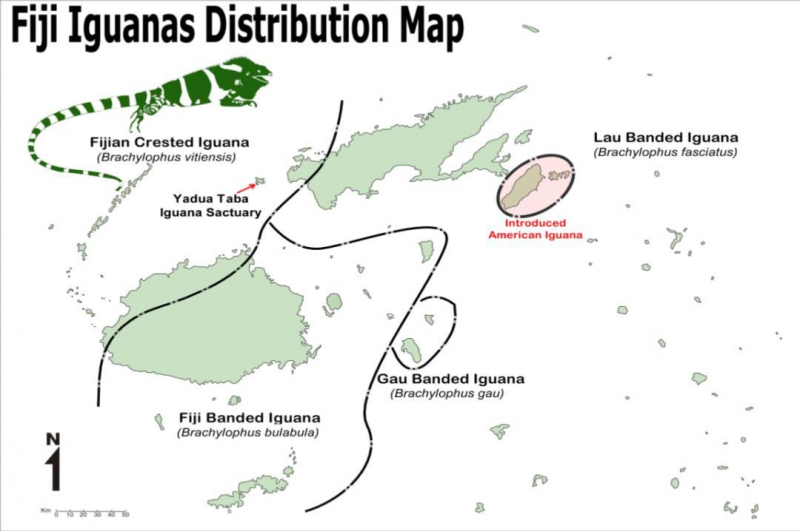
Photo: https://nationaltrust.org.fj/ 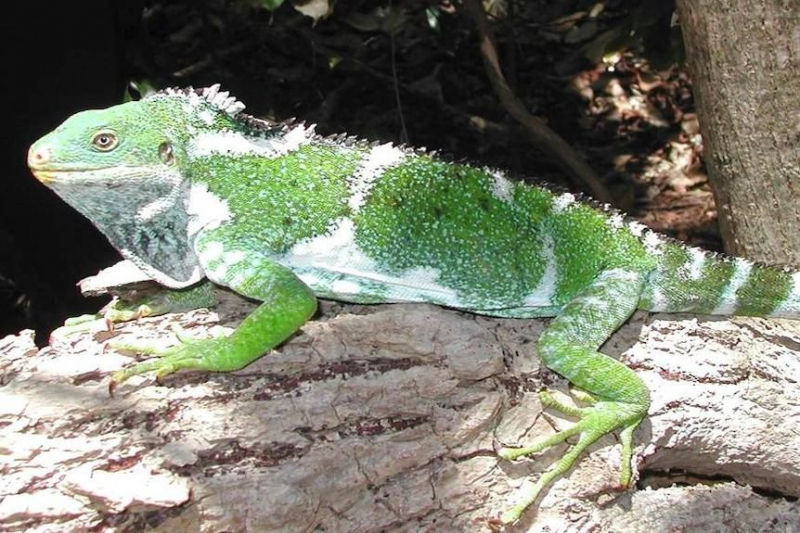
Photo: http://www.iucn-isg.org/ -
The Sacred Cobra Rock, one of the most beautiful historical sites in Fiji, is situated in what has been dubbed the "snake temple" in Labasa, Vanua Levu's main town. The now 3-meter-high rock is thought to have gotten larger over time, to the point where the temple's ceiling has had to be elevated four times since the 1950s. Locals believe that the rock, which is shaped like a snake, has the power to heal the sick and infertile. For many Hindus, the sacred growing stone has become a worshiping station, with garlands of brilliant flowers and tinsel adorning it and offerings of food, fire, and coconut cream placed at its foot.
The Rock, which is surrounded by offerings, is an excellent spot to learn about local legends and beliefs. The temple is also a great photo stop if you're traveling around Vanua Levu because of its vibrant hues. Visit Labasa and discover its town, markets, and river on Captain Cook Cruises Fiji's 4 Cultures Discovery Cruise. A few buses, notable ones to Natewa Bay ($1.60), pass by the temple. A taxi will set you back around $20. If you're driving, the temple is 10 kilometers from the Wainikoro Rd exit.
Location: Labasa, Fiji
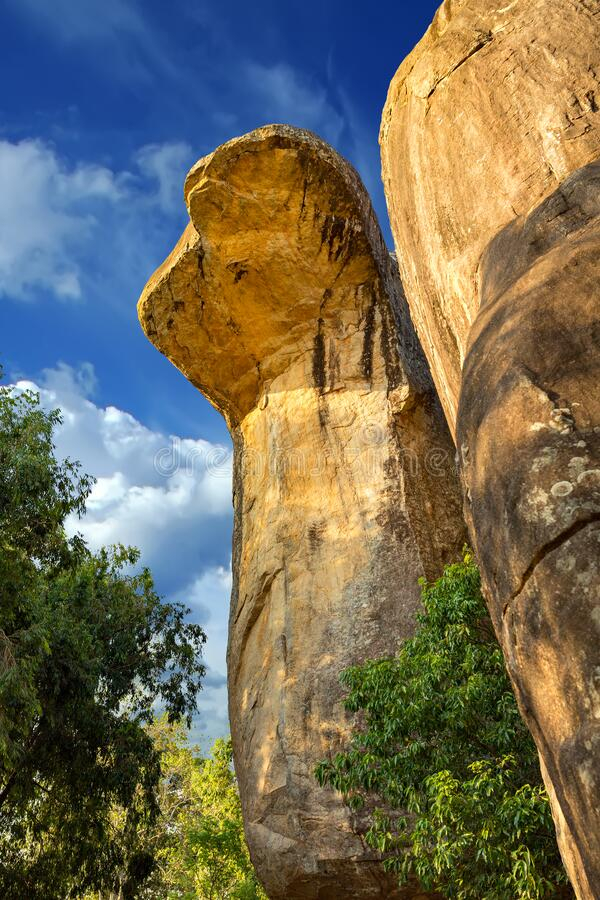
Photo: https://www.dreamstime.com/ 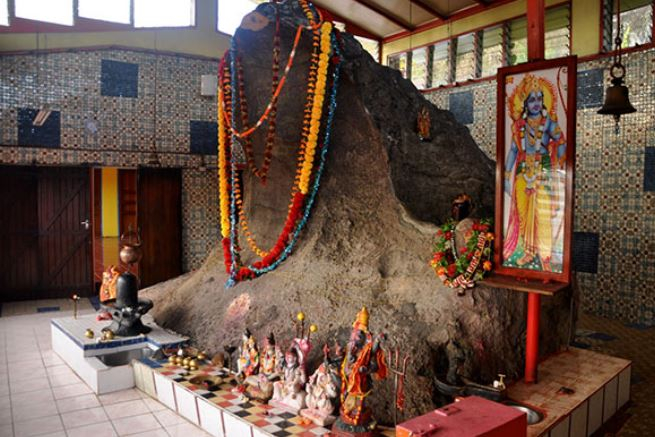
Photo: https://www.adequatetravel.com/ -
Naihehe translates to "a place to get lost" in English. It's not difficult to believe, given that it's Fiji's largest cave system. During Fiji's tribal warfare days, the 'Sautabu' tribe lived in Naihehe Cave. The cave was where the tribe's members would flee and hide from their foes during the tribal conflict. The cave was used as a hiding spot during the ancient tribal times of the Islands because of its natural fortress-like properties. It was an extremely hidden hiding place because it had concealed access to the cave's top via wild vines.
When visiting the caverns, it is important to obtain permission from the Bete (priest), the cave's traditional protector. According to legend, if you skip this crucial step and enter the cave without authorization, you'll be locked there for the rest of your life!
The Naihehe Caves represent practically the full history of Fiji, from geology to today's tourism influence, and are bathed in history from tribal battles to cannibalism. The tour is challenging, but guests are rewarded with unforgettable anecdotes and breathtaking views of the limestone caves. This cave, known for its gigantic size and odd natural attributes, was originally a fortress for a cannibal clan and still has a cannibal oven and other grisly remnants. You'll truly feel like you're in Fiji's heart.
Location: Viti Levu, Fiji
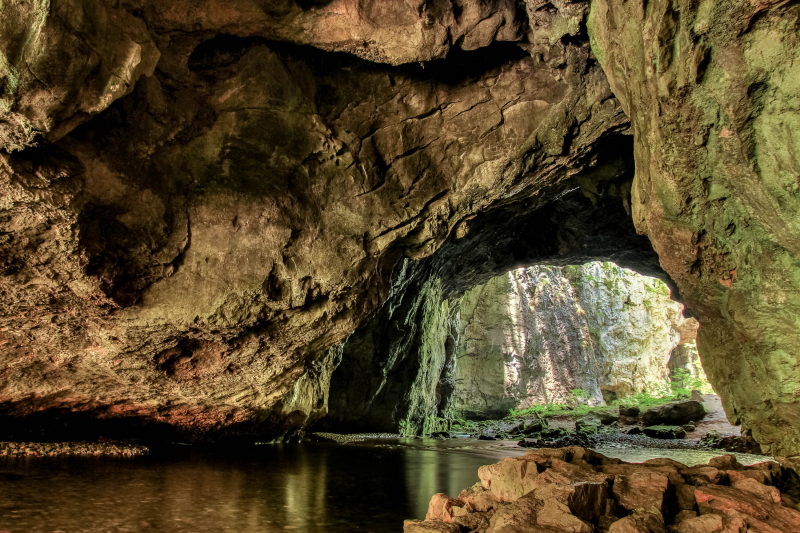
Photo: https://franks-travelbox.com/ 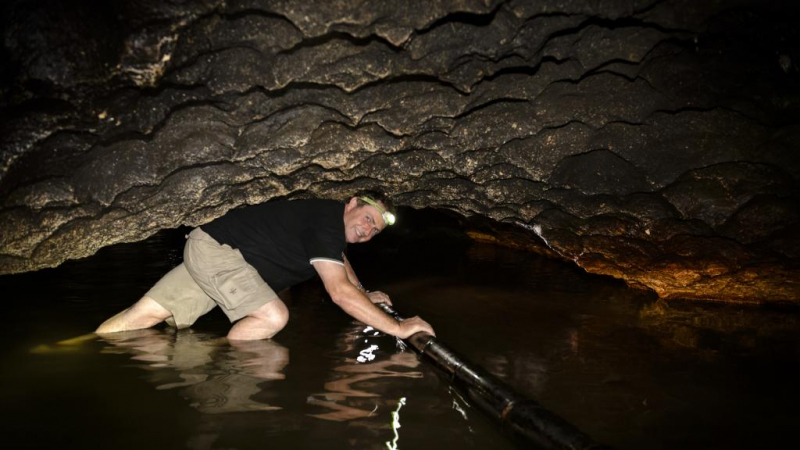
Photo: https://www.travelonline.com/ -
This is a must-see for those who want to get off the beaten path. Momi Bay is a historical park with vintage World War II cannons that remind visitors of the constant threat that the British interests in the Pacific faced in the early 1940s. This one, though, is in Fiji, and it's 140 minutes from Suva with a short ascent to a calm region with breathtaking views. Due to their strategic location amidst the Pacific waters, the Fiji Islands were a prominent target for Japanese attacks as the shadow of World War II fell over the globe. New Zealand Expeditionary Forces built defenses at several sites across Viti Levu to prevent the islands from falling into enemy hands. In order to preserve the Navula Passage, a dangerous break in the western reef, Momi was chosen as one of these places.
After being built by New Zealanders in 1941, the United States Coast Artillery arrived in 1942 to provide replacement soldiers, which remained stationed there until 1944. The National Trust of Fiji Islands now looks after the battery, which reflects a proud moment in Fiji's history. The National Trust of Fiji repaired the property, which was officially inaugurated in2017. A visitor information center was built and the eight cement structures were repainted in the customary camouflage motif.
Location: Nadi, Fiji
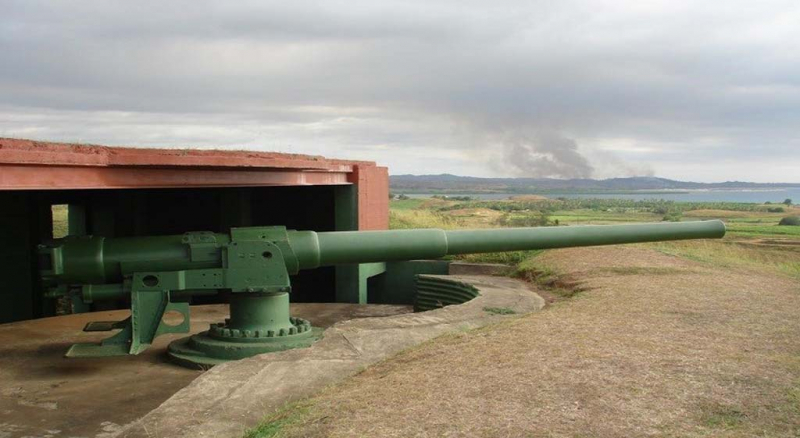
Photo: https://fijianhistory.com/ 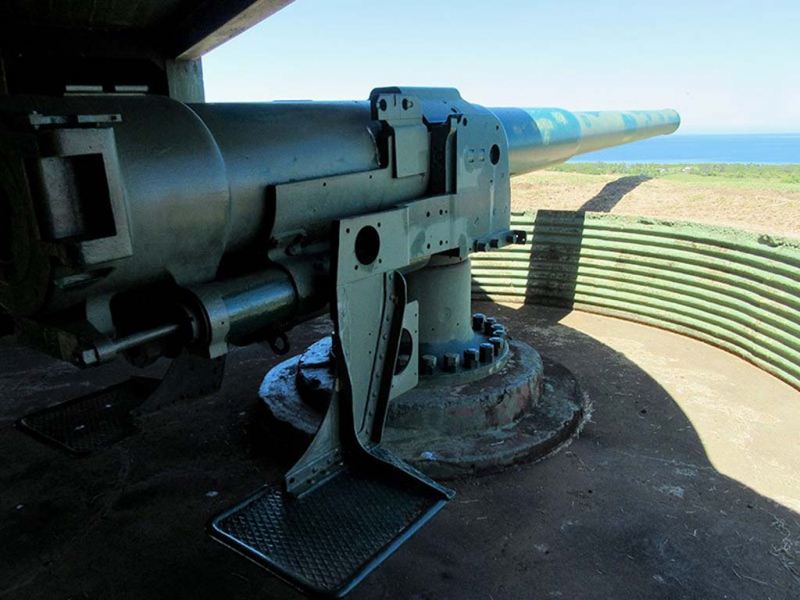
Photo: https://fijianhistory.com/ -
From a 90-meter-high limestone hill, the Tavuni Hill Fortification looks out over the Sigatoka River. It was built by a Tongan clan that arrived in the early 1800s. The artifacts on show inside this semi-restored old Fiji fort are virtually flawlessly maintained, allowing a direct view into Fijian history.
Tongan invaders positioned themselves on the steep mountain where the fort presently stands in the seventeenth century. From their camp, they waged war on the surrounding land until they were finally forced out in 1876 by British soldiers. The fort was never inhabited again after the Tongans left, and it wasn't even visited until 1994 when it was reopened.
The knowledgeable tour guides are descendants of the fort's original Tongan inhabitants, and they present guests with a fascinating history of individuals who once lived there. Two magnificent viewpoint sites overlooking the Sigatoka River and the Viti Levu Coastline provide incredible photographic opportunities, making the trip worthwhile in and of itself. Near the fort, there are additional historical sites to visit, such as ceremonial grounds and the eerie killing stone, where victims' heads were smashed with a war club.
At the foot of the hill, the community of Naroro began work on restoring the Tavuni Hill Fort. It has paved paths and offers excursions to visitors regularly. As a result of intermarriage and adaption, many Tongan descendants are living in Sigatoka today. Finau's descendants can currently be found in the Nadroga settlements of Naroro, Korotogo, Nawamagi, Malevu, Cuvu, and Nadrala; Navosa's Waicoba; and Nadi's Vatutu and Waqadamu.
Location: Naroro, Fiji
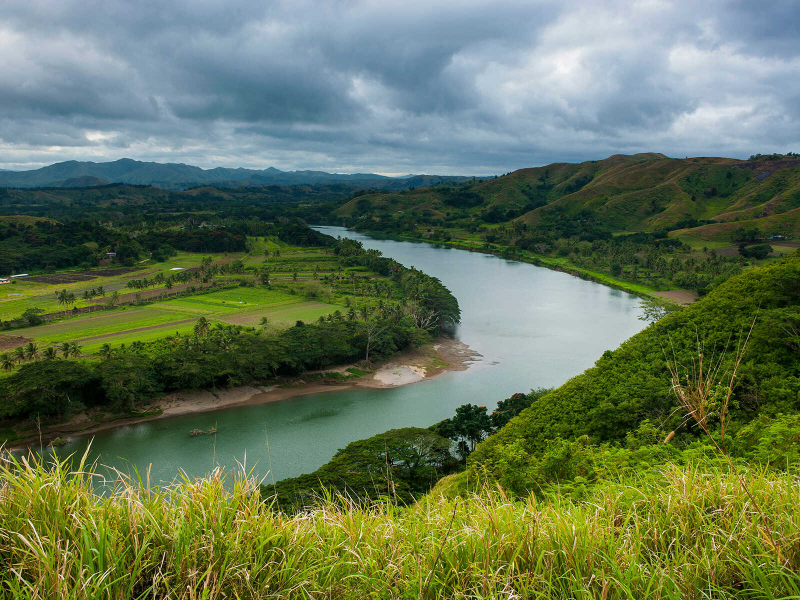
Photo: https://www.mustseespots.com/ 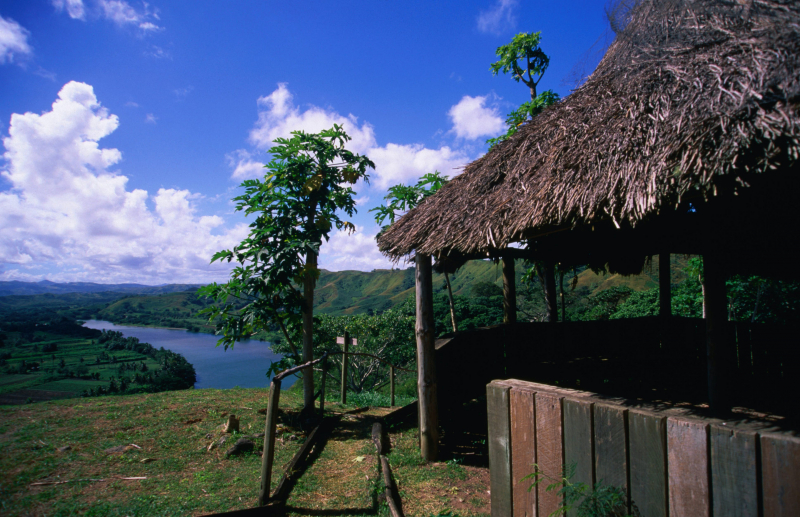
Photo: https://www.lonelyplanet.com/ -
Vatulele Island is the last most beautiful historical site in Fiji you should not miss. Vatulele is a coral and volcanic island located 32 kilometers (20 miles) south of Fiji's largest island, Viti Levu. Lomanikaya, Ekubu, Taunovo, and Bouwaqa are the four communities that make up the island. Coconut and taro cultivation, fishing, and the sale of Fijian hand-printed tapa are all examples of economic activities. The Legend of the Red Prawns is well-known in Vatulele. The prawns are revered by the islanders, who consider them sacrosanct and prevent the killing or harming of them in any way. Anyone attempting to take them away will be shipwrecked, according to legend.
Visitors who are fortunate enough to visit Vatulele Island, which is located immediately below Viti Levu, may be able to observe petroglyphs, which are traditional Fijian rock art. The 3,000-year-old drawings, which depict a face and other objects, are only accessible if you stay at the nearby (and now-shuttered) resort. The island itself is a traditional Fijian island that you should visit if you have the chance.
Several archaeological sites can be found on Vatulele Island. Caves featuring early rock carvings and paintings are among them. The island is presently only accessible to guests staying at Vatulele Island Resort, which offers trips to the areas where these early works of art can be seen.
Location: Vatulele, Fiji
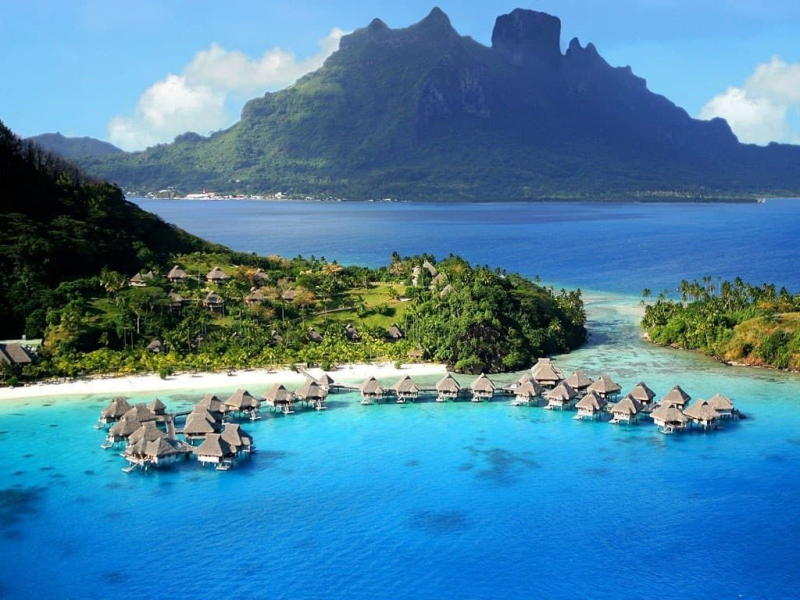
Photo: http://fiji.revolucontent.com/ 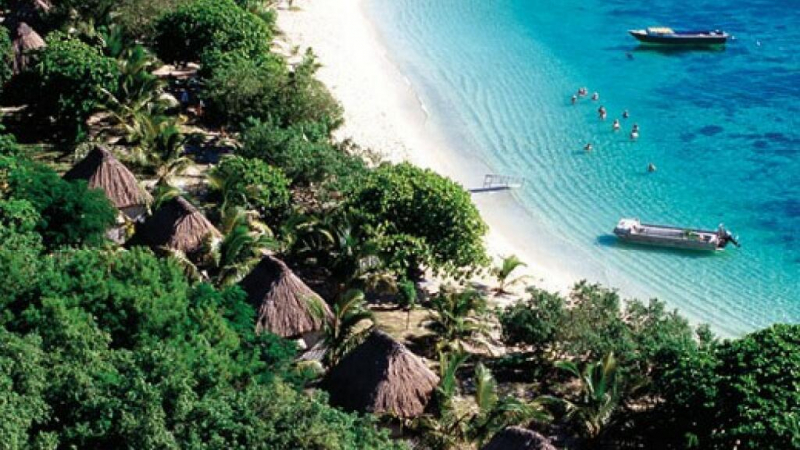
Photo: https://www.travelonline.com/ -
Warrior Burial Cave (Taveuni Island) is another of Fiji's odd historic sites, found on Taveuni Island (a one-hour flight northeast of Suva). Taveuni is the quintessential tropical island, densely forested and ablaze with tropical flora. Much of the island is covered in lush rainforest, with forest reserves and the Bouma National Heritage Park protecting over 80% of it. To keep the bones of Taveuni's best warriors from being discovered by foes, it is thought that they were buried and hidden in this cave ("the Warrior Burial Cave"). After the cave was found in the 1950s, many of the huge bones were removed.
The Warrior Burial Cave in Taveuni is possibly one of the most Instagrammable locations on our list. This vast cave system was called after the Taveuni warriors who were buried here, and it was originally regarded as the most sacred burial ground for the area's first people. It served as a haven for the remains of renowned soldiers, preventing them from being desecrated by invading armies. (However, when the 350-meter-long cave system was discovered in the 1950s, many of the huge bones were removed.)
Fijians used this location as a secret warrior burial cave in the past. Taveuni's greatest warriors are said to have been buried here to keep their remains hidden from foes.
Location: Taveuni island, Fiji
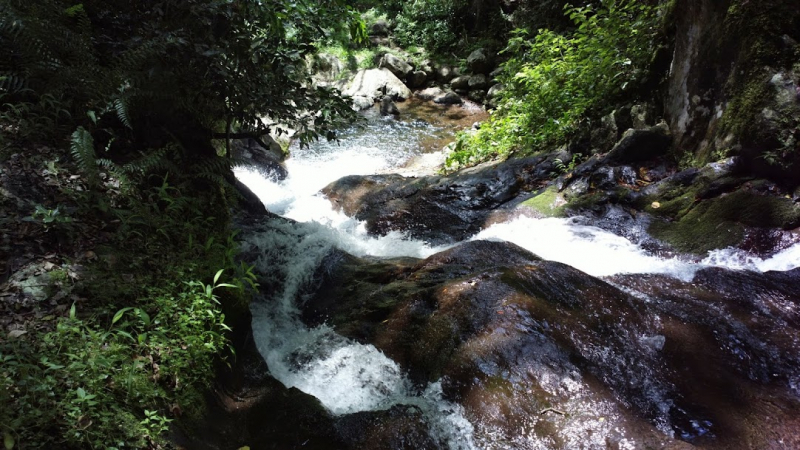
Photo: https://carta.guide/ 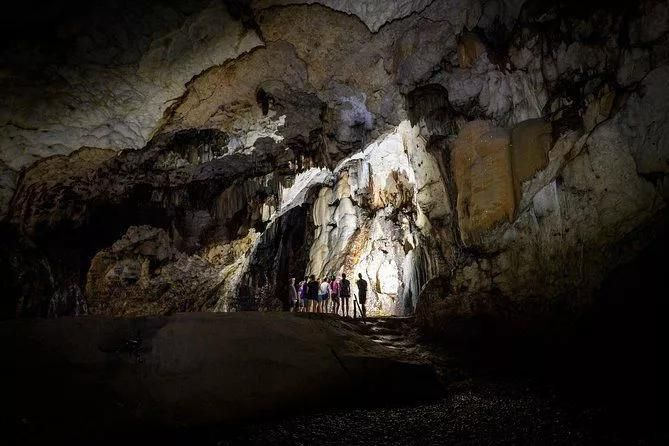
Photo: https://fijipocketguide.com/ -
The Sri Siva Subramaniya temple in Nadi, Fiji, is a Hindu temple. The Sri Siva Subramaniya Temple, a tranquil Hindu temple and the largest Hindu temple in the southern hemisphere, is one of the few places outside of India where Dravidian architecture can be observed. Despite its ancient history, the vibrantly colored temple is continuously under construction. Famous artists such as ST Santosh have contributed to the temple's design over the years.
The ancient temple had been around for quite some time. In 1926, the Then India Sanmarga Ikya Sangam (TISI Sangam) was founded in the original temple edifice. Following the Golden Jubilee celebrations in 1976, the TISI Sangam was revitalized. Many of Nadi's festivals, such as Karthingai Puja, are held at the temple, which attracts worshipers from all over the world. Devotees went in droves to see and participate in the temple's numerous new and distinctive religious ceremonies, which were held for the first time.
Visitors are welcome but must be respectful at all times, dress modestly, and refrain from bringing shoes or cameras within the temple, as neither is permitted. Non-Hindus are asked to refrain from accessing the inner sanctum, even though people of all origins and religions are welcome inside the temple.
Location: Nadi, Fiji
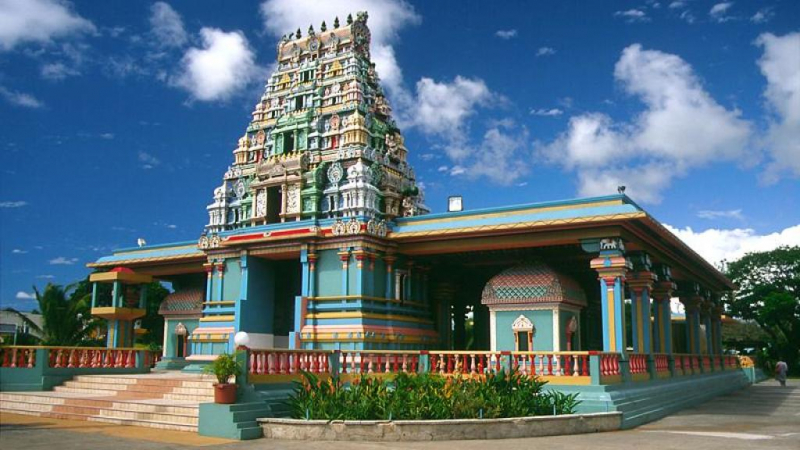
Photo: https://www.travelonline.com/ 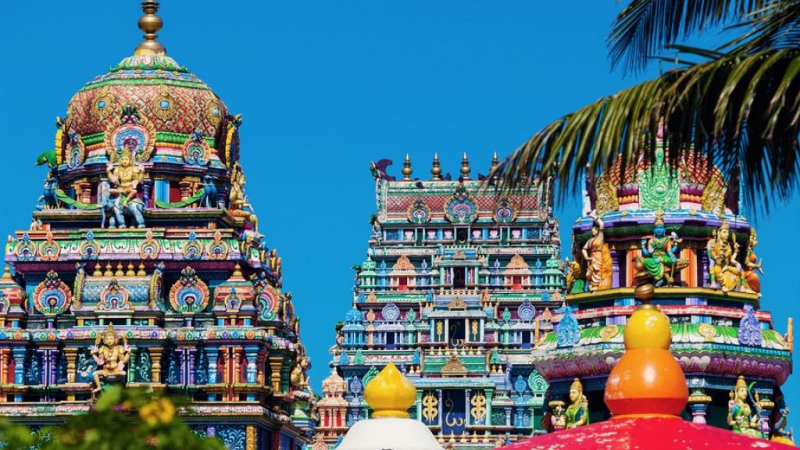
Photo: https://www.travelonline.com/
































